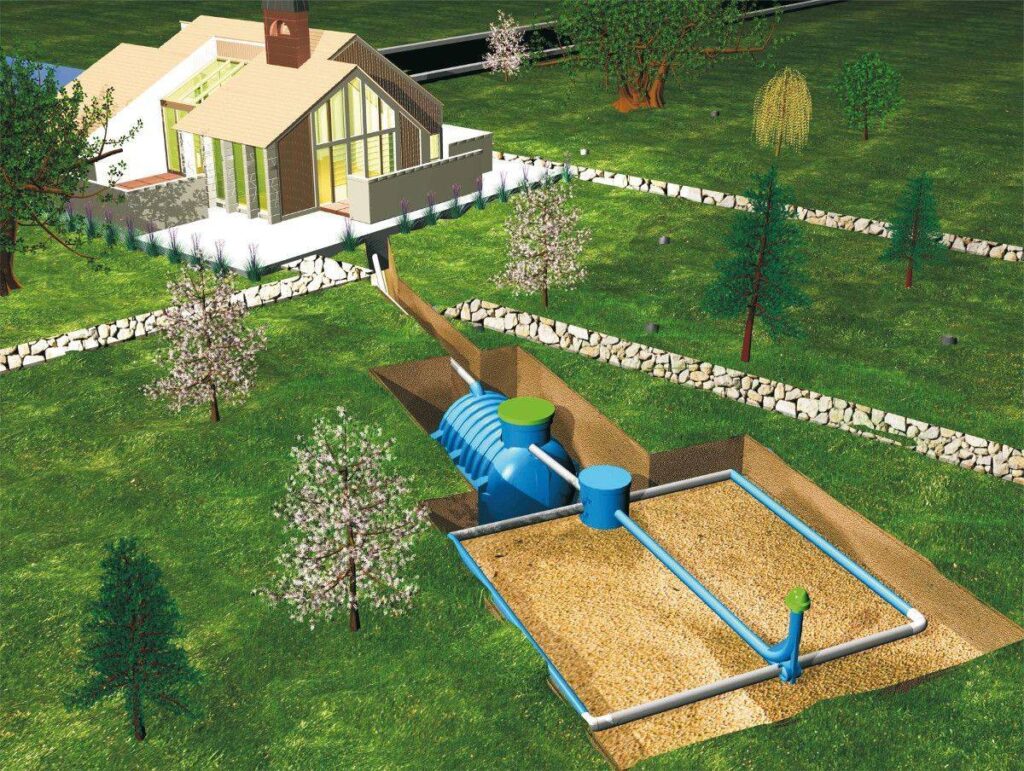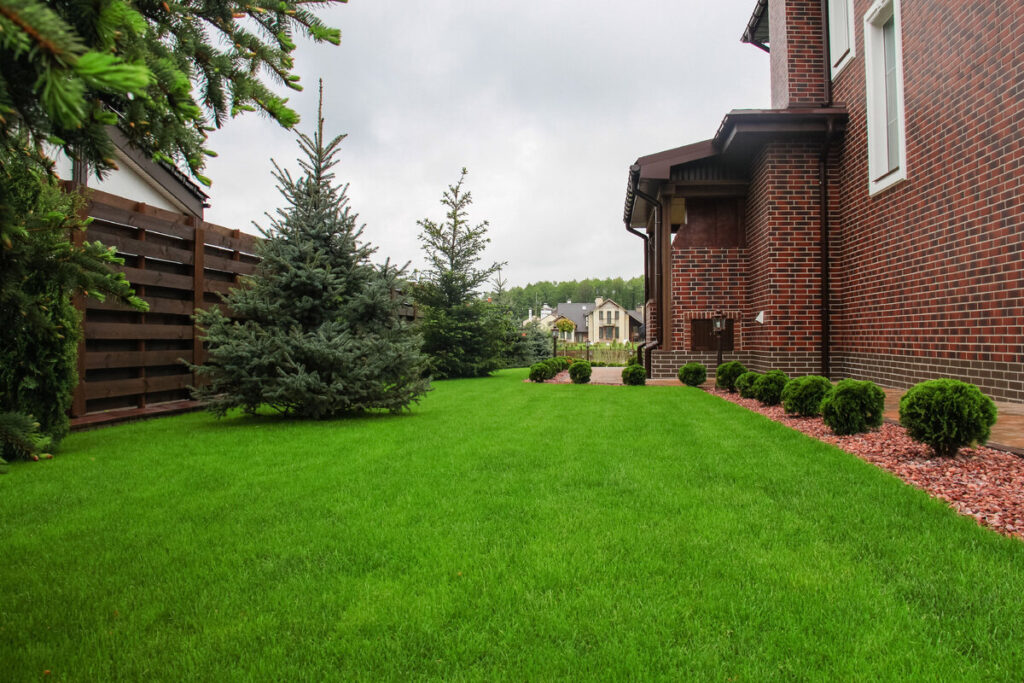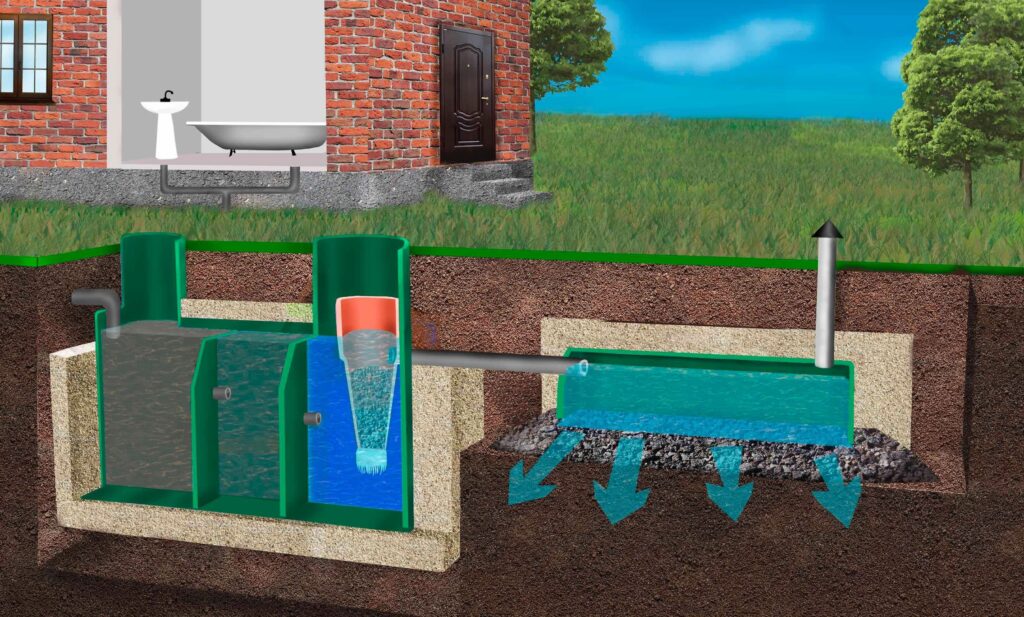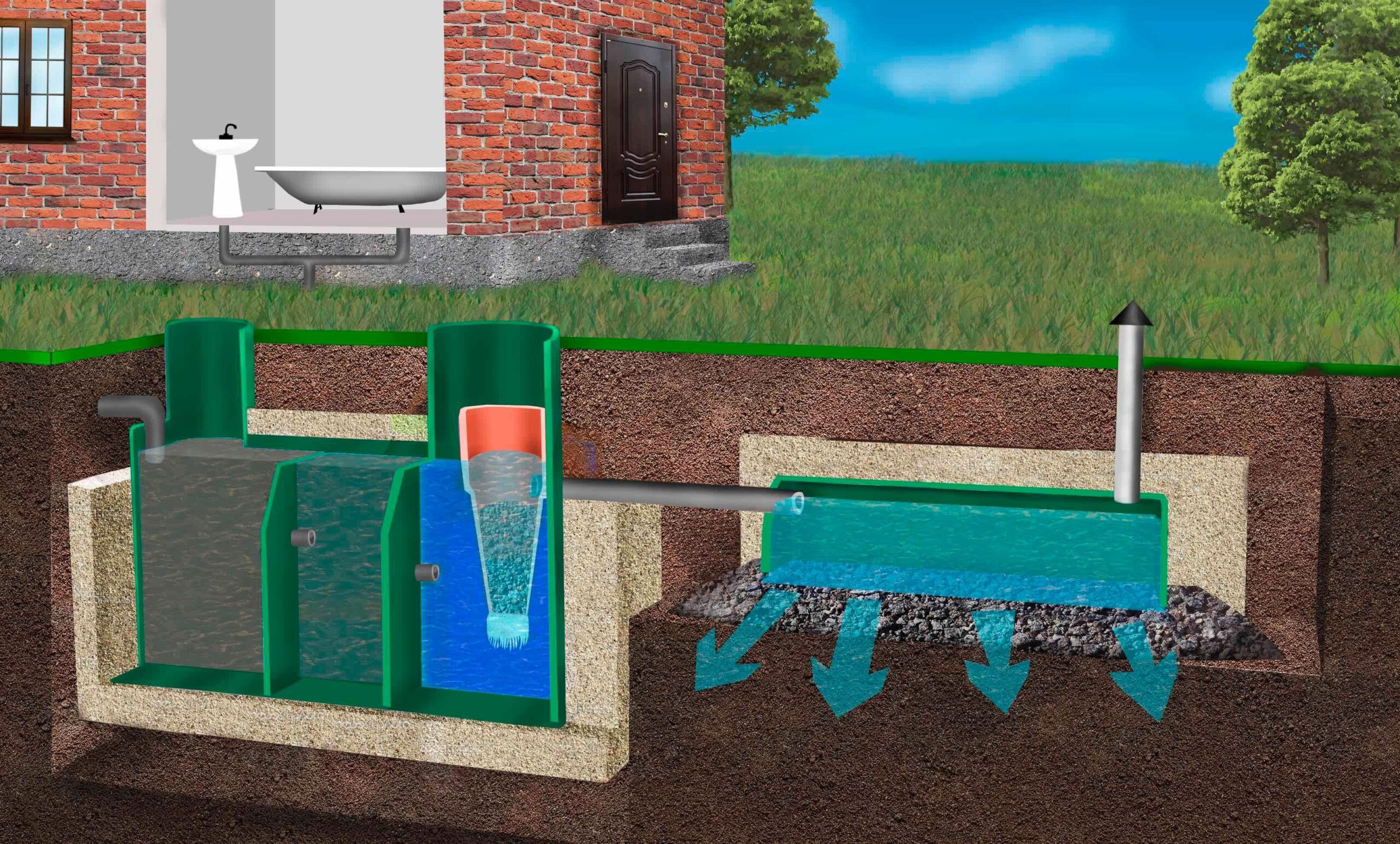To begin with, the owner of the house should determine the daily volume of effluent, in the utilization of which he needs. The calculation is done quite simply, taking into account the number of occupants of the country mansion. Each person per day consumes about two hundred liters of water, and if the house is constantly inhabited by 5 people, the capacity of the station should be 1 m3. There are cases when one treatment system is not enough, so a decision is made to install two septic tanks. This solution is used when it is necessary to process increased volumes of wastewater and reduce the cost of purchasing and installing sewage equipment.
Why do you need two septic tanks?
- Separation of gray and black sewage. One septic tank can accumulate “gray” water (from the washing machine, shower, kitchen), and the other can accumulate “black” water (from toilets). This helps to relieve the main septic tank and improve water treatment, as the “gray” effluent is easier to clean and can be processed more efficiently.
- Increased wastewater treatment. If a lot of people live on the property or appliances (washing machines, dishwashers, etc.) are actively used, one septic tank may not be enough to handle all the wastewater. An additional septic tank helps handle larger volumes of wastewater and prevents overflows.
- Backup septic tank. If one septic tank needs to be repaired or cleaned, a second septic tank can temporarily fulfill its function, ensuring that the sewage system continues to operate smoothly.
- Improved wastewater treatment quality. Two septic tanks can operate sequentially, where the first performs basic filtration and the second performs aftertreatment. This improves the quality of the exiting water and reduces environmental pollution.
- Separating the system in difficult soil conditions. In areas with clay or water-saturated soils, a system with two septic tanks can be more efficient because the load is distributed to different areas of the soil, preventing one area from becoming over-watered.
Differences between factory-type on-site treatment plants
Modern septic tanks differ in various parameters, including materials of manufacture, built-in devices, performance indicators and energy consumption. Consequently, they should be chosen individually, taking into account the characteristics of the site and the number of residents of the country cottage. The presence of additional premises on the land plot, including a bathhouse, is also important. In such situations, many owners install two septic tanks, one of which is used to service the bathhouse. When choosing a model, the following parameters are taken into account:

- brand;
- performance;
- electricity consumption rate;
- material of assembly;
- tank volume;
- pumps/compressors/ventilation;
- product weight;
- dimensions.
Modern deep bio purification systems are multifunctional sewage equipment that can be serviced no more than twice a year without the involvement of sewage collectors and special equipment. The process of sewage treatment is fully automated and does not require human intervention. And the long service life of products practically eliminates the need for repair or replacement of installations for new ones. Manufacturers guarantee a minimum of 50-year service life of such local treatment plants, without special maintenance. Only rarely may require replacement of a separate element – compressor or pump unit.
Principle of operation
Despite the difference between modern modifications of deep bio purification tanks, they work according to a single scheme. The principle of processing the contaminated liquid inside the chambers of these products is the same. First, it enters the receiving compartment, where it settles and is freed from solid inclusions that settle to the bottom of the chamber. This process is called clarification, after which the clarified liquid flows into the aerotank. This is the name of the chamber filled with useful bacteria – aerobes, which perform filtration of biomass using a special technology. Colonies of these microorganisms secrete special enzymes that start the process of oxidation of biological waste.
As a result, fermentation begins and the fecal mass splits into small components that turn into sludge deposits. The latter are suitable for fertilizing sites without harming garden or horticultural crops. In the third chamber, the water undergoes the final stage of filtration and is discharged outside by a drainage pump unit or gravity. The best models of septic systems purify human waste up to 98 percent. The resulting water is absolutely sanitized, cleaned of harmful impurities and is even suitable for irrigation of garden/garden crops.
Difference in performance
Manufacturers of septic equipment offer different options for the arrangement of local sewerage. Some models are designed to serve a minimum number of users, others – for entire hotels, cottage settlements and apartment buildings. The second conditionally can be called industrial, representing huge structures designed for several dozens and even hundreds of users. In these tanks, powerful pumping and compressor devices are pre-installed, providing fast processing of fecal masses. Low-power analogs are designed for several people, having lower productivity and insignificant overall dimensions. Some models can serve only three users.
How to choose a solution?
The choice of autonomous sewerage and its installation is better to entrust to a specialized company offering the services of professionals. This is a responsible business that requires some practice and knowledge of some nuances. Amateurishness in this matter can lead to irreparable results and large financial losses. If the calculations are made incorrectly, the installed communication system will begin to fail immediately after launch. Before purchasing a VOC, it is necessary to conduct a detailed survey of the area where it is planned to arrange communications.

The purpose of geotechnical engineers is to study the characteristics of the soil, determine the predominant components and measure the depth of the location of the underground aquifer. Depending on the results obtained, a suitable sample of septic product with the required capacity is selected. Separately, project documentation is developed with an installation scheme, in which all the necessary parameters and indicators are specified. According to this scheme in the future the installation team will work without losing unnecessary time or effort.
If specialists decide to mount two septic tanks, it is necessary to select the most favorable in terms of price options. In addition, they should be well combined with each other, so that the system did not fail after launching into operation. Today, the market of sewage equipment is oversaturated with offers of different manufacturers, to understand which without specialized knowledge is quite difficult. This requires a professional who is well versed in modern VOCs and has a wealth of practical experience in installation.
Stages of installation
Installing two septic tanks on a country plot, the owner must take care to comply with all recommendations and sanitary-hygienic norms, in order to prevent accidents and local environmental disasters. If there is a bathhouse next to the residential mansion, it is better to install the second tank next to it. In general, when installing a septic tank, it is necessary to distance them sufficiently from residential and household buildings, drinking springs, trees and neighboring fences. These parameters are prescribed in the passport documentation from the manufacturer of a particular brand of septic installations. It is also necessary to observe the angle of slope of the supply pipeline, so that the liquid moves freely and no plugs appear.
Two septic tanks are installed in installation pits dug to a sufficient depth, with a tamped or concreted bottom. This measure is taken to prevent the plastic tank from floating or being squeezed to the surface by the earth mass, which occurs during floods/floods and frost heaving.

Manufactured using seamless technology polypropylene tanks of this modification will last at least half a century, easily coping even with large volumes of sewage. Built-in compressors and pumps also have a long service life and will perform their functions throughout the entire life cycle, without requiring repair or replacement. If the installed systems have sufficient capacity, they do not need to be supplemented with different filter structures. They should be serviced infrequently, removing excess sludge deposits suitable for fertilizer.
Conclusion
Equipping an autonomous sewerage system in a country mansion, the owner should proceed from the needs of his own family and not spend money on additional capacity, absolutely unsuitable in his situation. Today, the market provides a huge selection of model lines of different brands, among which there is sure to be the most suitable option at an affordable cost. To minimize the risk of mistakes as much as possible, it is better to contact a professional and ask for consulting assistance. The pro will always advise the most optimal solution, taking into account the specific needs of the customer. Competently selected and installed local-cleaning construction will serve much longer than the warranty period established by the manufacturer, without causing problems to the residents of the cottage. They will be able to enjoy a comfortable life in nature, surrounded by picturesque forests and water bodies.
